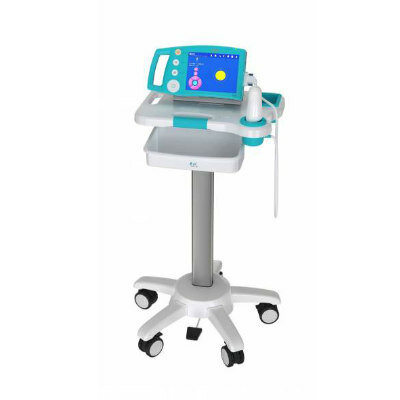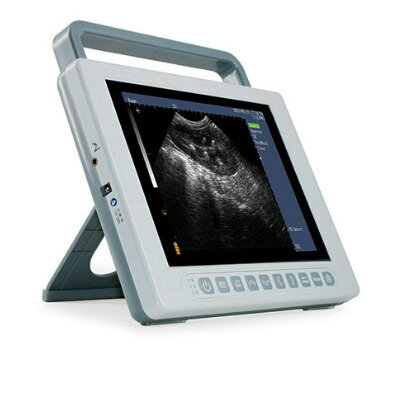Study Shows How to Cut Contrast Dye Use in CT
|
By MedImaging International staff writers Posted on 13 Jun 2022 |

The global shortage of contrast dye, which began in April with a COVID-related supply chain disruption, is expected to last at least several more weeks. As the worldwide shortage of contrast dye for medical imaging continues, a new study has quantified strategies that can be employed by medical facilities to safely reduce dye use in computed tomography (CT) by up to 83%.
Researchers at UC San Francisco (San Francisco, CA, USA) have modeled three conservation strategies that are weight-based (rather than fixed) dosing, reducing contrast dose while reducing tube voltage on scanners, and replacing contrast-enhanced CT with non-enhanced CT when it will minimally affect diagnostic accuracy. That third strategy – forgoing the dye in some cases of CT when it would result in only small impact on diagnostic accuracy – yielded the most dramatic reduction of dye use: 78%. CT is the most common use for the dye. These conservation methods could continue past the current shortage to reduce the use of contrast dye in general, according to the researchers.
Researchers modeled the three strategies individually and in combination using a sample of 1.04 million CT exams in the UCSF International CT Dose Registry from January 2015 to March 2021. The registry includes CT scan data from 161 imaging facilities associated with 27 health care organizations. On its own, weight-based dosing for abdomen, chest, cardiac, spine and extremity imaging reduced dye use by 10%; reducing the tube voltage in appropriate patients allowed a dye reduction of 25%. These two measures combined with using non-dye CT when possible led to a total reduction of 83%. Some facilities may not be able to execute all three strategies at once, but each can help conserve supply, according to the researchers.
And it is not just radiologists who need to know about them. When the contrast shortage subsides, medical facilities should consider continuing some of these practices that conserve contrast dye, according to the researchers. For example, reducing the tube voltage not only allows reducing the contrast volume that must be used, but also results in significantly lower radiation doses to patients. Tailoring doses to each patient’s weight allows lower dosing volumes for many patients. In addition, the researchers noted that their analysis highlights the large amount of contrast that is wasted when single-dose vials are used to deliver contrast. Hospitals and imaging centers that routinely use single-dose dye vials should consider using larger multi-dose vials, which allows for exact dosing and obviates the need to discard unused portions, according to the researchers.
“Contrast is essential in any situation where we need to assess the blood vessels – for example, for some trauma patients or those with a suspected acute gastrointestinal bleed – and it is also needed for evaluation of certain cancers, such as in the liver or pancreas,” said senior study author Rebecca Smith-Bindman, MD, UCSF professor in the Department of Epidemiology and Biostatistics. “However, most CT scans are done for less specific indications such as abdominal pain in a patient with suspected appendicitis. These can and should be done without contrast during the shortage, because the loss of information in these patients will be acceptable for most patients.”
“Given the acute shortage, it’s important that clinicians who order imaging exams coordinate with radiology to cancel scans that aren’t absolutely necessary, postpone exams that can be safely delayed, replace CT with MRI and ultrasound where possible, and order an unenhanced scan where possible. Further, clinicians should communicate with their patients about why this is necessary. It is crucial that contrast be conserved for clinical situations where its use is essential for accurate diagnosis,” added Smith-Bindman.
Related Links:
UC San Francisco
Latest General/Advanced Imaging News
- New AI Method Captures Uncertainty in Medical Images
- CT Coronary Angiography Reduces Need for Invasive Tests to Diagnose Coronary Artery Disease
- Novel Blood Test Could Reduce Need for PET Imaging of Patients with Alzheimer’s
- CT-Based Deep Learning Algorithm Accurately Differentiates Benign From Malignant Vertebral Fractures
- Minimally Invasive Procedure Could Help Patients Avoid Thyroid Surgery
- Self-Driving Mobile C-Arm Reduces Imaging Time during Surgery
- AR Application Turns Medical Scans Into Holograms for Assistance in Surgical Planning
- Imaging Technology Provides Ground-Breaking New Approach for Diagnosing and Treating Bowel Cancer
- CT Coronary Calcium Scoring Predicts Heart Attacks and Strokes
- AI Model Detects 90% of Lymphatic Cancer Cases from PET and CT Images
- Breakthrough Technology Revolutionizes Breast Imaging
- State-Of-The-Art System Enhances Accuracy of Image-Guided Diagnostic and Interventional Procedures
- Catheter-Based Device with New Cardiovascular Imaging Approach Offers Unprecedented View of Dangerous Plaques
- AI Model Draws Maps to Accurately Identify Tumors and Diseases in Medical Images
- AI-Enabled CT System Provides More Accurate and Reliable Imaging Results
- Routine Chest CT Exams Can Identify Patients at Risk for Cardiovascular Disease
Channels
Radiography
view channel
Novel Breast Imaging System Proves As Effective As Mammography
Breast cancer remains the most frequently diagnosed cancer among women. It is projected that one in eight women will be diagnosed with breast cancer during her lifetime, and one in 42 women who turn 50... Read more
AI Assistance Improves Breast-Cancer Screening by Reducing False Positives
Radiologists typically detect one case of cancer for every 200 mammograms reviewed. However, these evaluations often result in false positives, leading to unnecessary patient recalls for additional testing,... Read moreMRI
view channel
PET/MRI Improves Diagnostic Accuracy for Prostate Cancer Patients
The Prostate Imaging Reporting and Data System (PI-RADS) is a five-point scale to assess potential prostate cancer in MR images. PI-RADS category 3 which offers an unclear suggestion of clinically significant... Read more
Next Generation MR-Guided Focused Ultrasound Ushers In Future of Incisionless Neurosurgery
Essential tremor, often called familial, idiopathic, or benign tremor, leads to uncontrollable shaking that significantly affects a person’s life. When traditional medications do not alleviate symptoms,... Read more
Two-Part MRI Scan Detects Prostate Cancer More Quickly without Compromising Diagnostic Quality
Prostate cancer ranks as the most prevalent cancer among men. Over the last decade, the introduction of MRI scans has significantly transformed the diagnosis process, marking the most substantial advancement... Read moreUltrasound
view channel
Deep Learning Advances Super-Resolution Ultrasound Imaging
Ultrasound localization microscopy (ULM) is an advanced imaging technique that offers high-resolution visualization of microvascular structures. It employs microbubbles, FDA-approved contrast agents, injected... Read more
Novel Ultrasound-Launched Targeted Nanoparticle Eliminates Biofilm and Bacterial Infection
Biofilms, formed by bacteria aggregating into dense communities for protection against harsh environmental conditions, are a significant contributor to various infectious diseases. Biofilms frequently... Read moreNuclear Medicine
view channel
New SPECT/CT Technique Could Change Imaging Practices and Increase Patient Access
The development of lead-212 (212Pb)-PSMA–based targeted alpha therapy (TAT) is garnering significant interest in treating patients with metastatic castration-resistant prostate cancer. The imaging of 212Pb,... Read moreNew Radiotheranostic System Detects and Treats Ovarian Cancer Noninvasively
Ovarian cancer is the most lethal gynecological cancer, with less than a 30% five-year survival rate for those diagnosed in late stages. Despite surgery and platinum-based chemotherapy being the standard... Read more
AI System Automatically and Reliably Detects Cardiac Amyloidosis Using Scintigraphy Imaging
Cardiac amyloidosis, a condition characterized by the buildup of abnormal protein deposits (amyloids) in the heart muscle, severely affects heart function and can lead to heart failure or death without... Read moreImaging IT
view channel
New Google Cloud Medical Imaging Suite Makes Imaging Healthcare Data More Accessible
Medical imaging is a critical tool used to diagnose patients, and there are billions of medical images scanned globally each year. Imaging data accounts for about 90% of all healthcare data1 and, until... Read more
Global AI in Medical Diagnostics Market to Be Driven by Demand for Image Recognition in Radiology
The global artificial intelligence (AI) in medical diagnostics market is expanding with early disease detection being one of its key applications and image recognition becoming a compelling consumer proposition... Read moreIndustry News
view channel
Bayer and Google Partner on New AI Product for Radiologists
Medical imaging data comprises around 90% of all healthcare data, and it is a highly complex and rich clinical data modality and serves as a vital tool for diagnosing patients. Each year, billions of medical... Read more





















